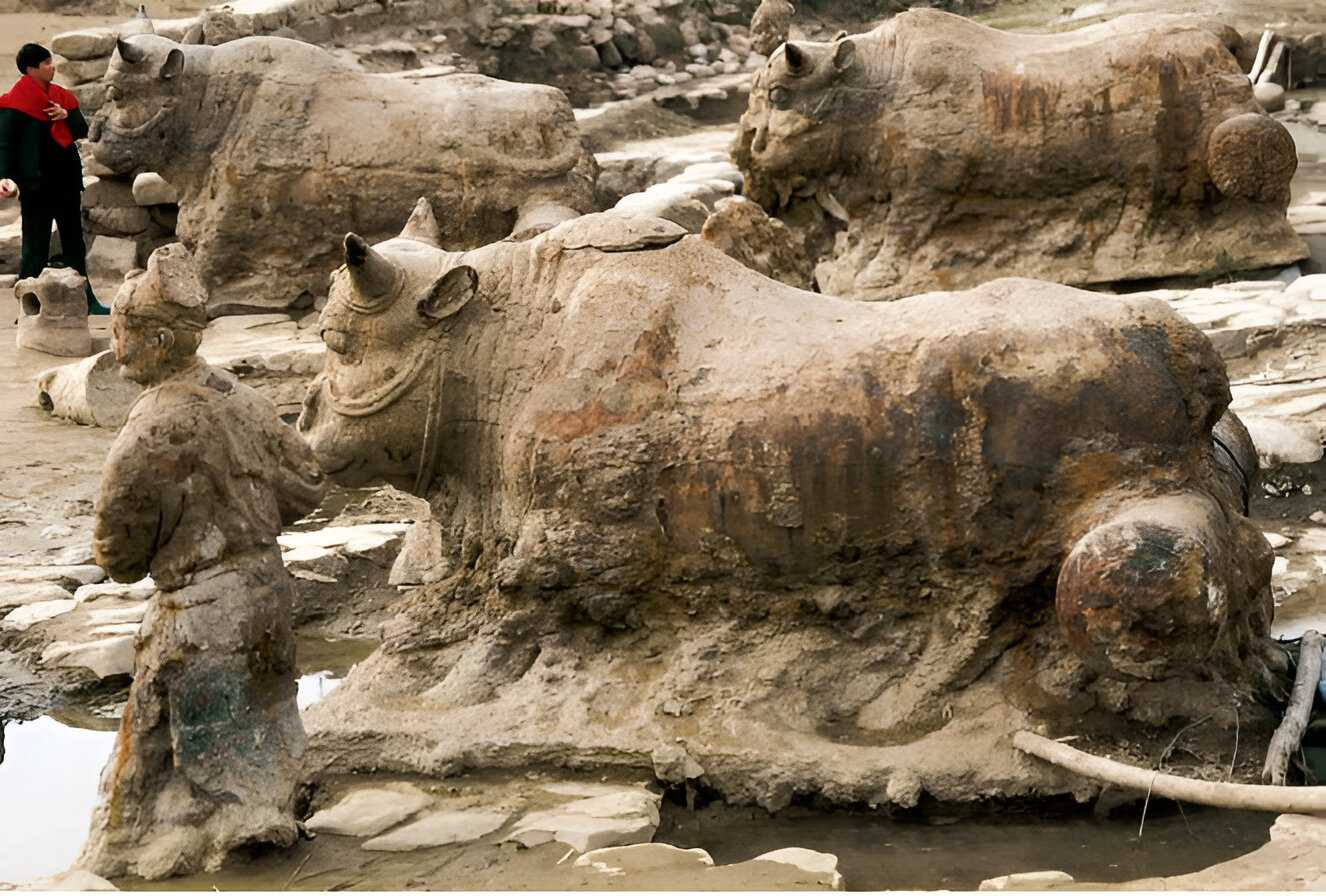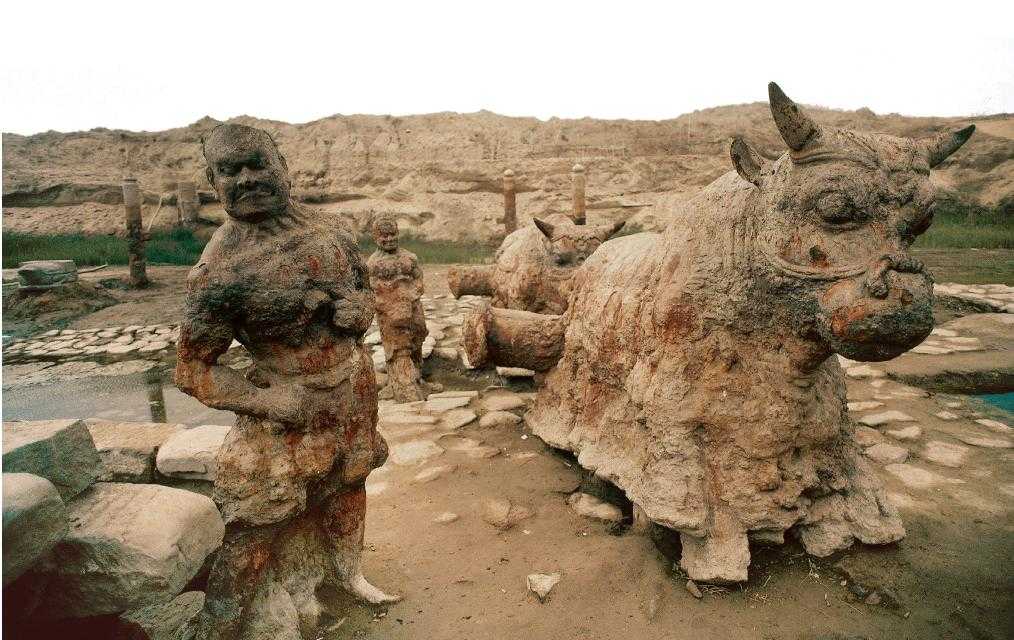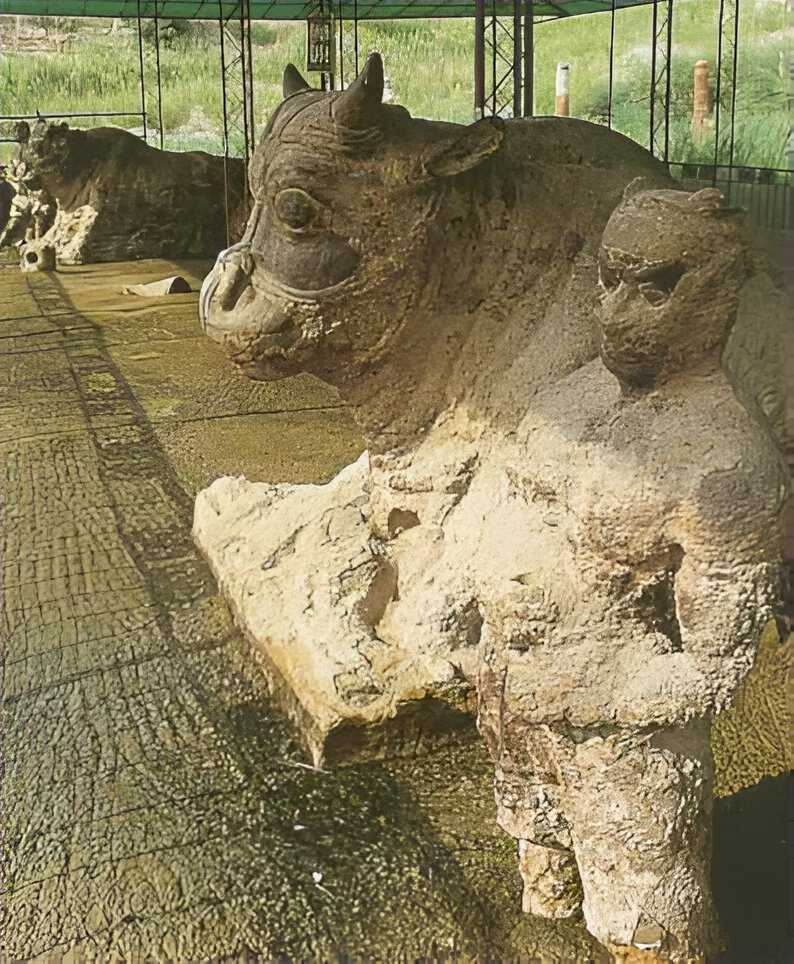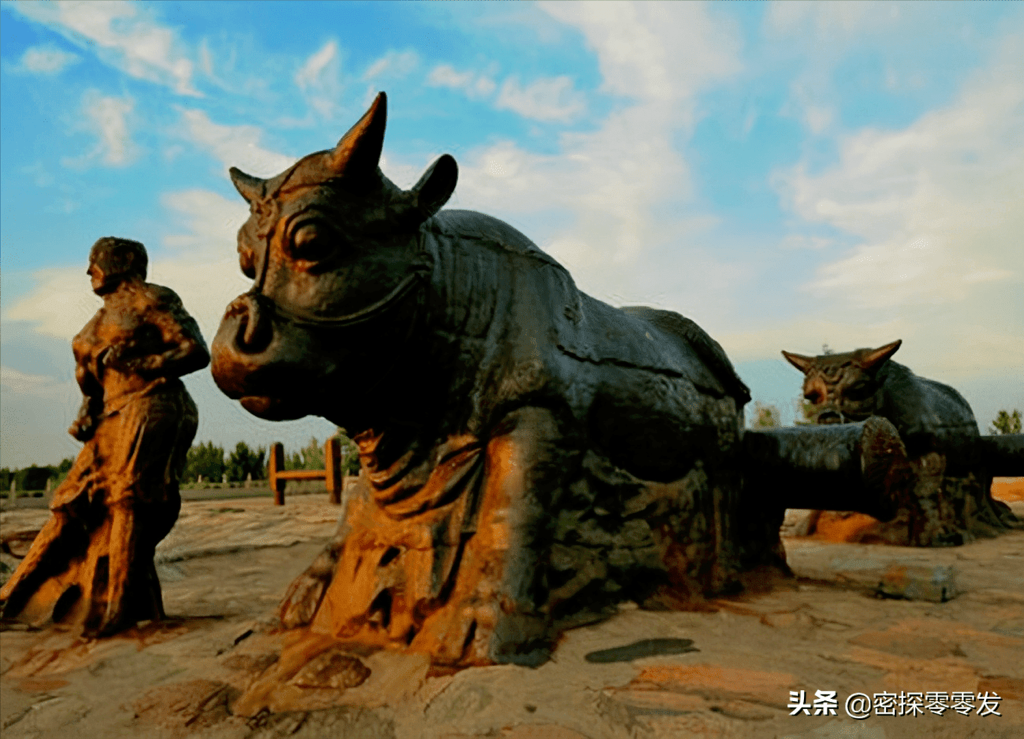Tucked away in Shaanxi Province, the Pujin Ferry Ruins—home to the imposing Great Iron Bulls on the Yellow River (黄河大铁牛)—offer a silent narrative of China’s layered history. Once a thriving nexus along the Yellow River, this site has transitioned from its bustling origins to a serene historical testament of time’s relentless march.
Get your dose of History via Email

Historical Tapestry of Pujin Ferry
Rooted in the Tang Dynasty (618-907 AD), an era marked by cultural blossoming and economic prosperity, the Pujin Ferry was a vital connective channel for commerce and communication between China’s eastern and western districts. Named after a notable general of the period, Pujin, the ferry’s inception was integral to the expansion and success of the Tang Dynasty’s infrastructure. It stood not only as a critical transit point but also as a complex, fortified structure indicative of the era’s advanced engineering capabilities.

Engineering Mastery and Architectural Significance
The construction of the Pujin Ferry Ruins stands as a historical highlight, embodying the ingenuity of ancient Chinese engineering. Pioneering techniques, such as driving wooden piles deep into the riverbed, provided a foundation that braved the Yellow River’s formidable currents. The remnants of this system showcase the ancients’ mastery over their environment, with well-paved roads of large stone slabs and strategic fortifications constructed from compacted earth and timber. The expanse of the ferry system, approximately 800 meters in length and 9 meters wide, could support a substantial flow of travelers and goods.

Artifacts and Historical Echoes
The site is particularly renowned for the enigmatic Great Iron Bulls—massive iron statues reputed to suppress the turbulent river waters. Each bull weighs up to 50 tons. These artifacts not only served a practical purpose but also symbolized the human endeavor to harmonize with nature’s forces. The presence of such relics, alongside other excavated items like pottery fragments and ancient currency, has enabled precise dating and offered rich insights into the life and times of the Tang Dynasty’s denizens.

Legacy and Conservation Efforts at Pujin Ferry Ruins
Today, the Pujin Ferry Ruins are a cherished cultural heritage site, reflecting the historical depth and accomplishments of ancient China. The site, now open to the public, allows visitors to traverse the same paths that once buzzed with the footsteps of traders, travelers, and soldiers. Ongoing preservation initiatives ensure that this historical treasure, and its stories of human innovation and interaction with nature, continue to inspire and educate future generations. The Ruins, standing proudly as an enduring legacy of the Tang Dynasty, offer a unique window into the profound narrative of China’s illustrious past.

I have often wondered how much history and artifacts were lost and destroyed with the construction of the Three Gorges Dam.
History becomes victims of economic progress , Political and religious change. This is evident all over the world. Question is are they still relevant, is there some lesson for us hidden in those? Answer is not easy so history should be preserved for people who can derive their lessons